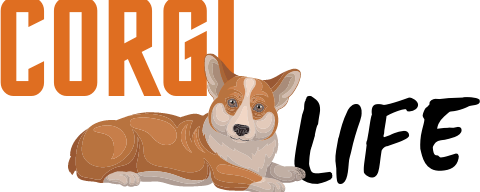Corgis shed almost all throughout the year. In fact, they shed some part of their double coat nearly every day. This means if you own one as a pet, you probably have fur around your home.
Without a doubt, having fur all over your furniture, clothes, and similar items is not desirable. But you can do something about it. While it is almost impossible to stop corgis from shedding outright, there are several ways to manage the condition.
In this article, we will review various ways you can reduce and manage your corgi’s shedding. So, if you own a corgi or are planning to adopt one, this list should help.
Give Your Corgi Regular Baths
Bathing your corgi is an effective way to control shedding. It may not stop shedding, but it helps to expel dead skin cells and fur.
While bathing is helpful, avoid over-bathing your corgi. Overbathing can damage the coat of corgis and even worsen shedding.
Having a bathing schedule for your corgi and sticking to it is essential. However, it is recommended to bathe your corgi once a month.
When bathing your corgi, use a brush to untangle and remove any loose hair. Also, ensure you use a high-quality shampoo to keep the coat of your corgi moisturized and healthy.
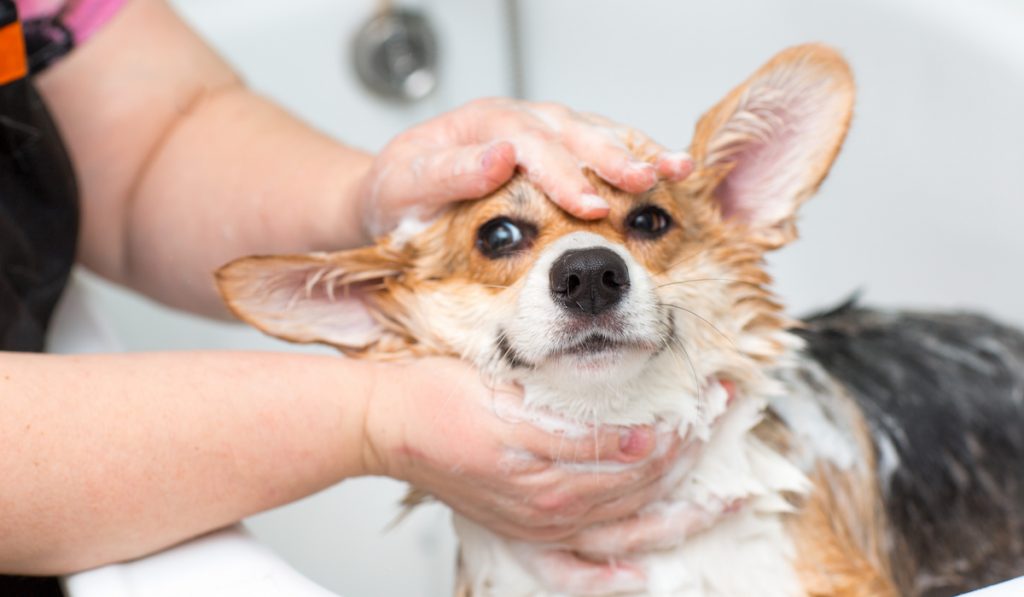
Avoid Shaving off Their Hair
Shaving off your corgi’s coat to stop shedding is a big no-no. Double-coated dog breeds like corgis rely on their coats to adapt to warm or cold temperatures.
Shaving your corgis and leaving them bare can lead to severe health issues. It can also leave them susceptible to parasites and allergies.
Shaving can also ruin the coat of your corgi by altering the way the hair grows. It may result in bald spots, matting, and more shedding.
Trim Their Claws
Generally, dogs tend to scratch a lot, even without parasites. When their claws are long and sharp, they can remove large sections of their coats. This eventually results in heavy shedding, uneven hair growth, and matting.
Trimming the claws of a corgi is easy, and it can help reduce shedding.
Spaying and Neutering
Removing your corgi’s testicles or ovaries can also help reduce shedding. Spaying or neutering your corgi helps to suppress any behavior that causes shedding.
When male corgis experience elevated testosterone levels, they become more playful. This excessive physical activity can accelerate shedding.
When females are pregnant, they tend to shed a lot. Shedding occurs because she shares her nutrients with her puppies. As a result, the nourishment her coat usually gets diminishes.
According to the ASPCA, you should neuter or spay your corgi at 6-9 months old, or you can seek advice from your veterinarian.
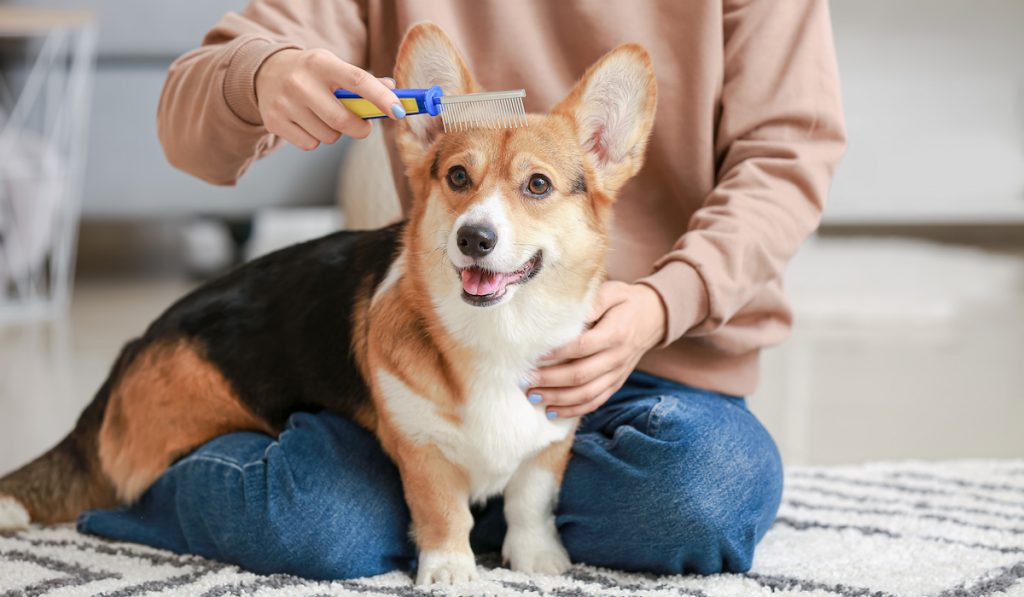
Trim Their Coat
Trimming your corgi can also help you manage its shedding. Shorter coats mean your corgi will shed less often, and the volume of tangles and dead cells will reduce.
You may trim your corgi every 2 to 5 months. And whenever you do, focus only on the outer hair and leave the undercoat.
Ensure you use stainless or new scissors. Dull scissors can get stuck in your dog’s hair and cause a painful sensation.
Combing the hair repeatedly as you trim makes trimming easy. You can also use a detangling solution to ensure the trimming process goes smoothly.
Remember, trimming and shaving are not the same. When giving your corgi a trim, be careful not to cut too much hair. Seek advice from your local dog groomer or vet when you want to trim your corgi.
Give Your Corgi a Good Haircut
Giving your corgi a good haircut before winter and summer can help reduce shedding. It also helps them regulate their body temperature.
Giving your corgi a haircut in the summer prevents heat from getting trapped in their coat. For the winter, you can visit a groomer to remove excess matting. Not only does it reduce shedding, but it also allows your corgi to bear the cold better.
If you are unsure about the style you want, ask your groomer for advice.
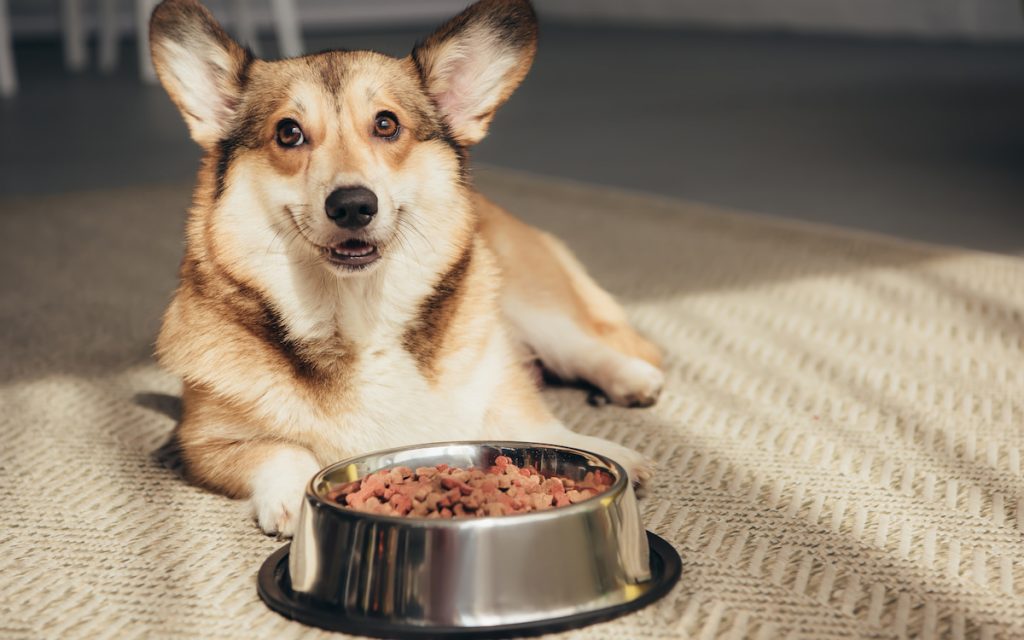
Control Your Corgi’s Diet
Malnutrition is one of the common reasons why corgis shed. Low-quality food and a poor diet will affect your corgi’s coat and skin with time. To keep your corgi healthy, ensure you place it on a high-quality diet.
Corgis require the right amounts of omega nutrients, protein, and fatty acids in their diet to keep their skin and coats healthy.
There are dog foods tailored to help corgis maintain a healthy coat. With proper research, you will know what to feed and what not to feed your corgi.
Feed Your Corgi Food Supplements
Feeding your corgi food supplements like fish oil can improve circulatory functions and help it maintain its silky coat.
Before you feed your corgi fish oil, visit your vet for advice. Your vet will help you determine the appropriate fish oil dose for your dog.
Give Your Corgi Regular Checkups
Your corgi gets exposed to various negative stimuli that can trigger physiological processes like shedding. Therefore, regular checkups are necessary.
Do not take checkups lightly, especially skin checkups. Take note of itchy symptoms if you notice any and relay such information to the vet.
The frequency of your dog’s itching will determine the number of times you visit the vet. Ensure you work with every piece of advice given by the vet.
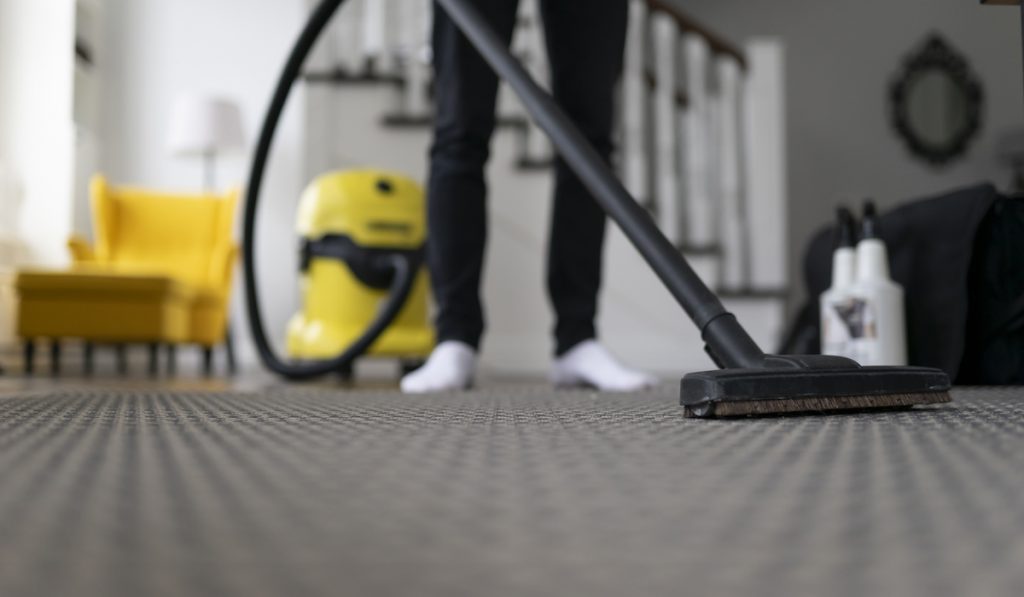
Vacuum Your Home Regularly
Corgis can become allergic to household dust, and if they do, they will begin to scratch and litter fur all over your home. To keep this from happening, vacuum your home routinely to remove allergens like dust.
When you vacuum, use a vacuum designed for dog hair. Ensure you vacuum areas where you suspect dog hair might build up.
You can also use the vacuum on your corgi but ensure it is comfortable around a vacuum cleaner.
Some vacuum cleaners give you the option of using grooming attachments that adjust grip and suction. Once the grooming attachment is attached to the vacuum, use it to slowly and gently stroke their backs. When you finish with their backs, proceed to vacuum their sides and bellies.
Check for Phobias
Keeping your corgi’s coats and skin healthy becomes complicated when the corgi is frightened to take a bath or be groomed. In this situation, dealing with your corgi’s anxiety is essential.
If your corgi is still an infant, ensure you get them exposed to grooming equipment. Corgis generally have a socialization period of one year. So, let them get comfortable with your tools before you begin grooming.
Before you begin grooming your corgi, observe their reactions. Gradually exposing your corgis to your tools is essential to reduce anxiety. If they react negatively, encourage them by giving them treats. You can seek advice from your local groomer or vet if this does not work.
Keep Your Corgis Away From Dirty Places
Dirt is a natural breeding ground for parasites that can result in severe skin irritations. Skin irritations not only cause itching they also increase the volume of fur shed by your corgi.
When you take your corgi out for their exercise, ensure they stay away from sidewalks, water puddles, and areas with mud. When going outdoors with your corgi, either use a car or keep them in a crate until you arrive at your destination.
Another alternative is to take your corgi to daycare once or twice a week since they clean daycares regularly.
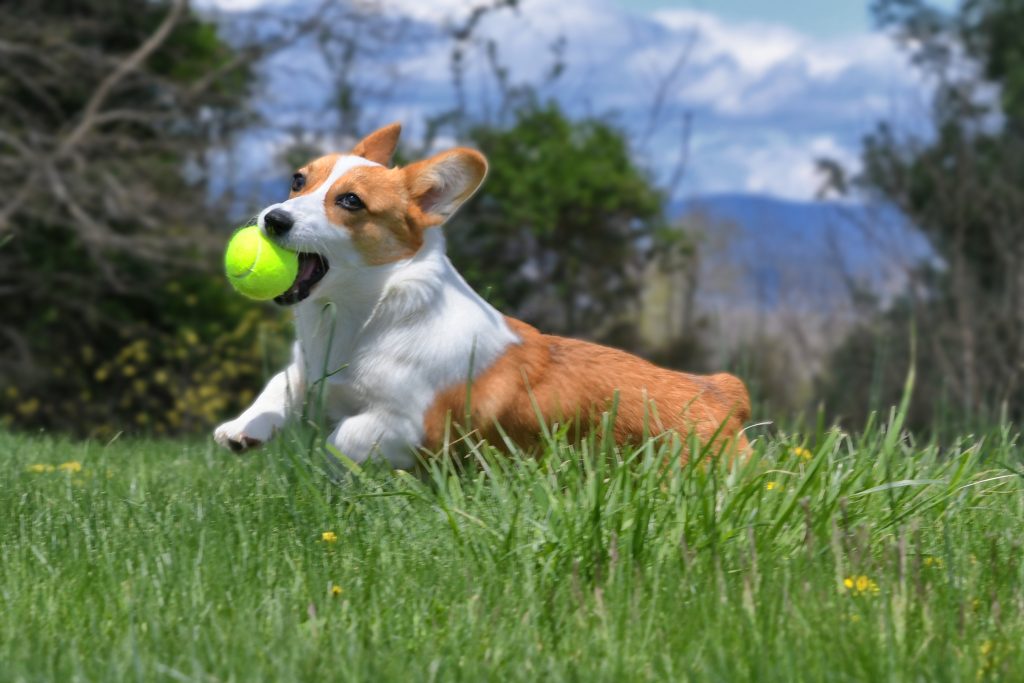
Give your Corgi Regular Exercise
By exercising regularly, your corgi will be less stressed. When corgis are less stressed, they typically shed less. Besides its effects on shedding, exercising can help keep your dog happy, strong, and healthy.
Letting your dog play in the park is one way to exercise them. You can also try indoor games if the weather is bad or you don’t like going going outdoors. For instance, you can play hide and seek. But ensure you have enough space for your corgi to move.
Ensure your corgi gets around 30 minutes to 2 hours of playtime every day.
Create a Grooming Schedule
Following a strict grooming routine is another way to manage your corgi’s shedding. It also helps you keep track of how much hair your corgi is shedding.
Grooming schedules for individual corgis tend to vary according to seasonal changes, health, and lifestyle. But it may include:
- Bathing them once a week
- Trimming their coats every 2-3 months
- Brushing them before and after baths and at least twice a week
- Trimming their claws once every month or when it is necessary
Being able to follow this routine may depend on your schedule and how cooperative your corgi is. Avoid skipping a grooming session, or else you may end up paying for it. It is best to settle on a grooming schedule that suits you and your dog.
Resources:
- https://instacorgi.com/do-corgis-shed
- https://thesmartcanine.com/do-corgis-shed
- https://dogsandclogs.com/do-corgis-shed/#8_Have_a_grooming_schedule
- https://www.thepuppymag.com/how-to-deal-with-corgi-shedding
- https://corgiadoption.com/stop-corgi-shedding#8_Check_for_allergies
- https://welovedoodles.com/corgi-shedding
